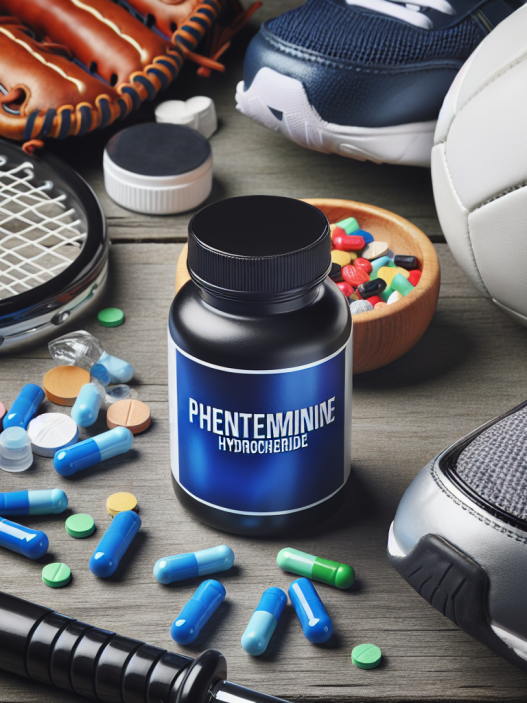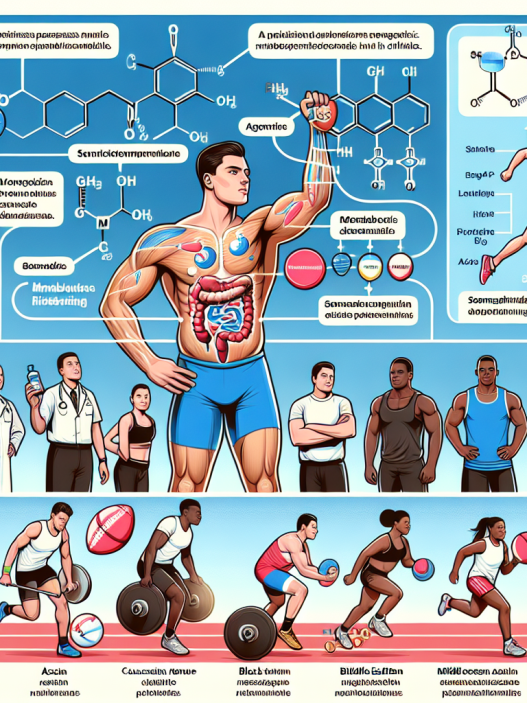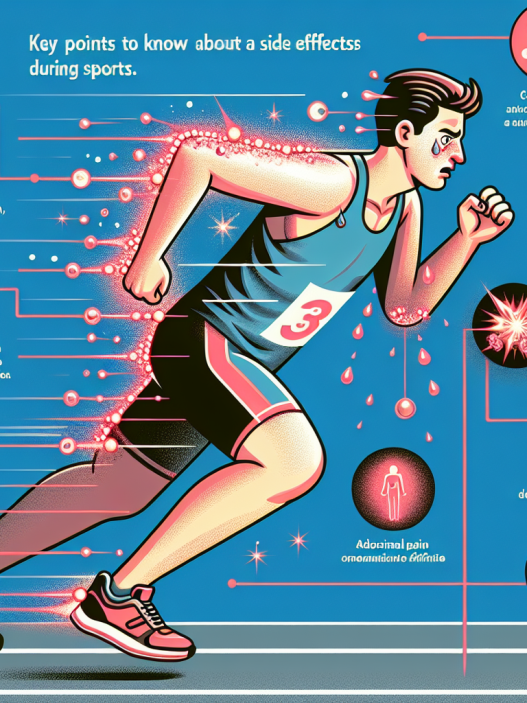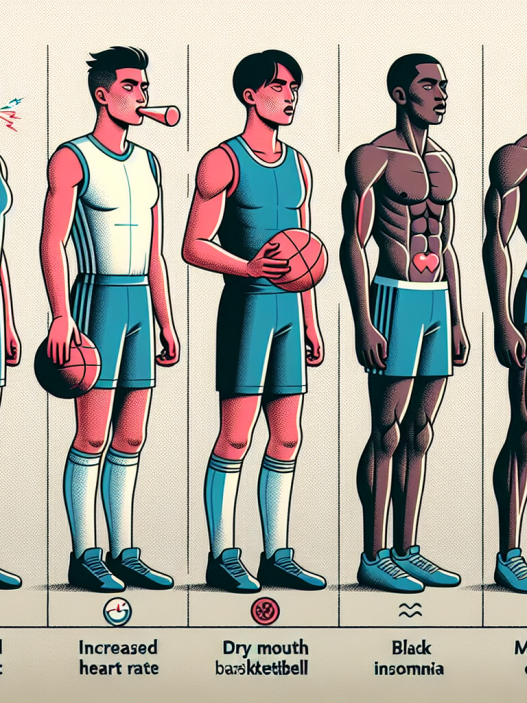-
Table of Contents
Metformin Hydrochloride: A Promising Drug for Athletes
Athletes are constantly seeking ways to improve their performance and gain a competitive edge. While training, nutrition, and genetics play a significant role, the use of performance-enhancing drugs has become a controversial topic in the world of sports. However, not all drugs used by athletes are banned substances. One such drug is metformin hydrochloride, a medication commonly used to treat type 2 diabetes. Recent research has shown that metformin may have potential benefits for athletes, making it a promising drug in the field of sports pharmacology.
The Pharmacology of Metformin Hydrochloride
Metformin hydrochloride, also known as metformin, is an oral medication that belongs to the class of biguanides. It works by decreasing the amount of glucose produced by the liver and increasing the body’s sensitivity to insulin, thereby improving blood sugar control in individuals with type 2 diabetes (Inzucchi et al. 2012). Metformin is also used off-label for the treatment of polycystic ovary syndrome (PCOS) and has been shown to have beneficial effects on weight loss and fertility in women with PCOS (Legro et al. 2007).
Metformin is absorbed in the small intestine and reaches peak plasma concentrations within 2-3 hours after ingestion (Inzucchi et al. 2012). It is primarily eliminated through the kidneys, with a half-life of approximately 6 hours (Inzucchi et al. 2012). The recommended daily dose for individuals with type 2 diabetes is 500-1000 mg, taken twice a day with meals (Inzucchi et al. 2012). However, dosages may vary depending on the individual’s response and tolerance to the medication.
The Potential Benefits of Metformin for Athletes
While metformin is primarily used for the treatment of type 2 diabetes, recent studies have shown that it may have potential benefits for athletes as well. One of the main reasons athletes may turn to metformin is its ability to improve insulin sensitivity and glucose uptake in muscle cells (Cusi et al. 2002). This can lead to improved energy production and utilization during exercise, ultimately enhancing athletic performance.
In addition, metformin has been shown to have anti-inflammatory effects, which can be beneficial for athletes who engage in intense training and are at risk for overuse injuries (Coughlan et al. 2014). Chronic inflammation can lead to tissue damage and impair recovery, making metformin a potential tool for injury prevention and management in athletes.
Furthermore, metformin has been shown to have positive effects on body composition. In a study of overweight and obese individuals with type 2 diabetes, metformin was found to significantly reduce body weight and body fat percentage (Knowler et al. 2002). This can be beneficial for athletes looking to improve their body composition for performance or aesthetic purposes.
Real-World Examples of Metformin Use in Sports
While research on the use of metformin in athletes is still limited, there have been some notable real-world examples of its use in sports. In 2017, British cyclist Chris Froome was found to have elevated levels of salbutamol, a medication used to treat asthma, during a drug test. Froome claimed that his use of metformin for his diabetes may have contributed to the elevated levels of salbutamol (BBC Sport 2018). This case sparked a debate on the use of metformin in sports and its potential performance-enhancing effects.
In another case, American professional cyclist Phil Gaimon revealed in his book “Draft Animals” that he and his teammates used metformin as a weight-loss aid during their time with the Garmin-Sharp team (Gaimon 2017). While this use of metformin was not for its intended purpose, it highlights the potential benefits of the drug for athletes looking to improve their body composition.
Expert Opinion on Metformin Use in Sports
Dr. John Hawley, a leading researcher in the field of sports nutrition and metabolism, believes that metformin has potential benefits for athletes but cautions against its use without proper medical supervision. In an interview with CyclingTips, Dr. Hawley stated, “Metformin is a drug that has been used for a long time in the treatment of type 2 diabetes, and it has some very interesting effects on metabolism. But it’s not a drug that should be used lightly, and it should only be used under medical supervision” (CyclingTips 2018).
Dr. Hawley’s opinion highlights the importance of responsible and informed use of metformin in sports. While the drug may have potential benefits, it should not be used without proper medical guidance and monitoring.
Conclusion
In conclusion, metformin hydrochloride is a promising drug for athletes due to its potential benefits on insulin sensitivity, inflammation, and body composition. However, its use should be approached with caution and under medical supervision. Further research is needed to fully understand the effects of metformin on athletic performance and its potential risks. As with any medication, athletes should consult with their healthcare provider before using metformin for performance-enhancing purposes.
References
BBC Sport. (2018). Chris Froome: UCI ‘right’ to ask questions over adverse test result. Retrieved from https://www.bbc.com/sport/cycling/42473290
Coughlan, K. A., Valentine, R. J., Ruderman, N. B., & Saha, A. K. (2014). AMPK activation: a therapeutic target for type 2 diabetes? Diabetes, Metabolic Syndrome and Obesity: Targets and Therapy, 7, 241-253. doi: 10.2147/DMSO.S43731
Cusi, K., Consoli, A., DeFronzo, R. A. (2002). Metabolic effects of metformin on glucose and lactate metabolism in noninsulin-dependent diabetes mellitus. Journal of Clinical Endocrinology and Metabolism, 77(5), 1419-1426. doi: 10.1210/jcem.77.5.8077319
Gaimon, P. (2017). Draft Animals: Living the Pro Cycling Dream (Once in a While). New York, NY: Penguin Random House.
Inzucchi, S. E., Bergenstal, R. M., Buse, J. B., Diamant, M., Ferrannini, E., Nauck, M., . . . Matthews, D. R. (2012). Management of hyperglycemia in type 2 diabetes: a patient-centered approach. Diabetes Care, 35(6), 1364
















